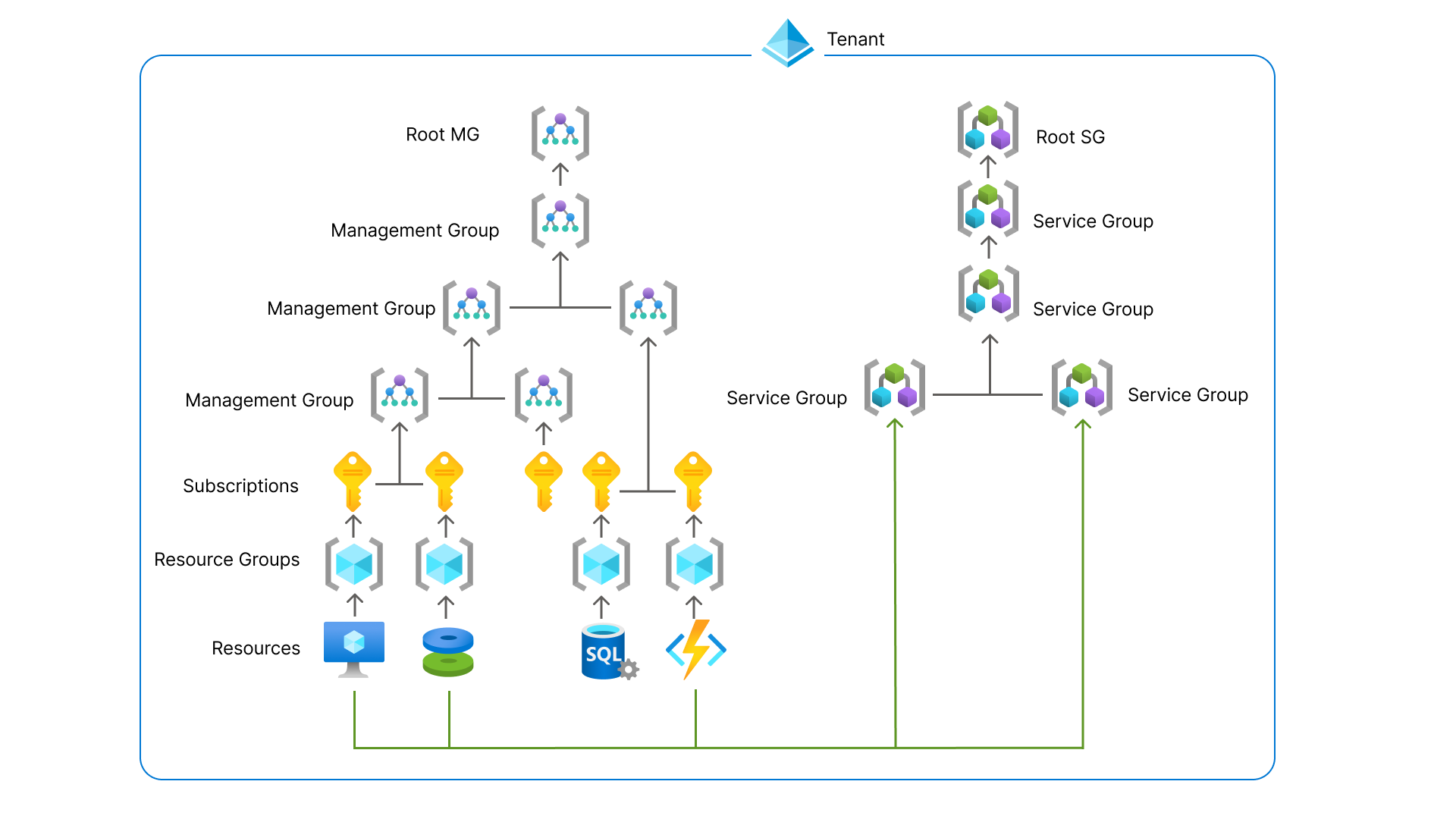Senior Product Manager L64
2020 - 2025
Senior Program Manager L63
2018 - 2020
Product Manager II L62
2017 - 2018
I led product strategy and execution for Azure’s core Organizing Resources platform within ARM — the systems responsible for helping customers bring order, clarity, and control to sprawling cloud environments.
General Responsibilities
As Senior Product Manager for Azure Resource Manager (ARM) and Azure Governance, I led strategy, coordination, and execution for key resource organization capabilities. My responsibilities spanned across product delivery, cross-team collaboration, support, and platform health.
Product Ownership & Delivery
Partnered daily with engineering leads to drive user story progress, sprint planning, feature delivery, and monthly/quarterly roadmapping
Managed Azure DevOps boards and ensured backlog quality, timely execution, and alignment with broader Azure goals
Oversaw release management and launch coordination for new features and iterative improvements across Management Groups, Service Groups, Tags, and Relationships
Cross-Org Collaboration
Acted as the central coordination point across ARM and key partner teams, including:
Azure Deployments, Resource Graph, Templates, and Governance
Microsoft Identity/Entra, Commerce & Billing, Legal/Compliance, Support, and Marketing
Ensured product alignment with global compliance and business strategy through ongoing stakeholder engagement
Communication & Stakeholder Management
Delivered detailed product updates to internal leadership, support teams, and external stakeholders
Handled all outage communications, customer questions, support escalations, and field inquiries — across all interfaces: REST APIs, CLI, PowerShell, SDKs, and Azure Portal
Monitoring & Continuous Improvement
Defined and monitored product telemetry using Azure Data Explorer, Resource Graph, and Power BI
Led monthly support reviews, triaging issues, and driving improvements based on tickets and performance data
Took ownership of everything related to the product — from big features to backend fixes and fine-grained UX polish

Highlighted Projects
Azure Service Groups and Relationships
Launched in 2025 after a multi-year effort, Service Groups & Relationships introduced a paradigm-shifting way to organize resources in Azure — moving beyond rigid hierarchies to a graph-based model that reflects real-world connections. This new grouping feature enables flexible, persisted relationships across and within services, unlocking deeper governance, automation, and insight.
Highlighted Features
-
Group components like NICs, disks, and NSGs under a single VM for granular control and visibility.
-
Define and persist meaningful links between resources across regions, scopes, or services.
-
Understand when to use metadata tagging versus persistent relationships for clarity, automation, and audibility.
Azure Management Groups
Launched in 2018, Azure Management Groups introduced a dynamic, top-level hierarchy for organizing resources at scale. I served as the lead PM from late 2017 through May 2025, guiding the product from initial concept to global adoption — now used in over 10 million Azure hierarchies.
Highlighted Features
-
Originally envisioned as a replacement for Azure Enterprise Agreements, Management Groups were refocused into a cornerstone of Azure’s governance strategy enabling scalable policy enforcement, access control, and resource organization.
-
Feature set added to support enterprise customers and their requirements for additional controls.
-
Layer of automation created to sync external system inventory with Azure Management Groups and Policy for security and compliance scenarios.
-
At launch, Management Groups introduced a new directory-level resource type which initially lacked support for custom RBAC roles. I partnered with the Microsoft Identity team to define and implement the required architecture changes, ultimately enabling full custom RBAC support.
-
Management Groups initially lacked visibility in Azure Monitor and Log Analytics, limiting customers’ ability to track hierarchy changes and usage patterns. I worked cross-functionally with the Azure Monitor and Resource Graph teams to integrate Management Groups into the diagnostic pipeline.
Resource Tag Modernization
Tag Modernization was a groundbreaking initiative to overhaul Azure’s tagging system — addressing long-standing issues around global consistency, data ownership, and governance. Tags were widely used, but behavior varied across services, lacked inheritance, and offered limited enforcement capabilities.
Highlighted Features
-
To eliminate collisions and enforce consistency, we introduced namespaces for tags, allowing both Azure and customers to define structured, conflict-free tag keys. This created a scalable foundation for system-reserved metadata, organizational standards, and customer-specific taxonomies to coexist without interference.
-
Legacy tag implementations relied on individual resource providers to store and surface tag data, resulting in inconsistency and data loss. This project introduced a centralized, platform-managed tag store, ensuring consistent behavior, durability, and accessibility across all Azure resources, regardless of type or provider.
-
To reduce redundancy and enforce consistency, we introduced tag inheritance across resource hierarchies, allowing tags applied at higher scopes (like Management Groups or Subscriptions) to automatically propagate to child resources. This enabled governance at scale, simplified policy enforcement, and reduced manual tagging overhead.
-
We implemented fine-grained Role-Based Access Control (RBAC) for tagging operations, giving organizations the ability to manage who can create, edit, or delete tags independently from resource-level permissions. This separation of duties improved security, supported compliance use cases, and empowered centralized metadata management without overexposing access.
-
To support platform features while preserving customer control, we established a clear separation between system-generated and customer-defined tags. This distinction ensures that Azure can apply internal metadata (e.g., billing, policy, telemetry) without interfering with user-owned taxonomies, enabling both to coexist safely and transparently.





